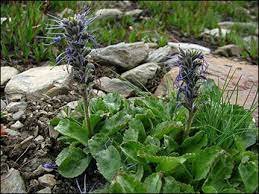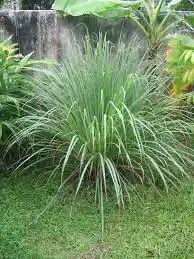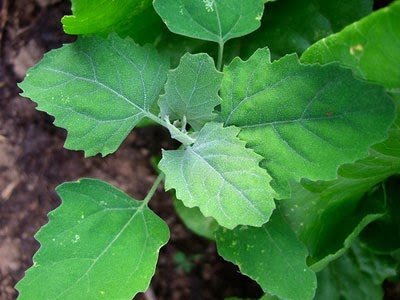Barley Nutrition Requirements
Nutrition required by Barley at each stage of its life cycle.
SOIL PREPARATION

Soil Preparation
Soil Preparation Method for Barley: Soil Testing: Before planting barley, conduct soil tests to assess pH levels, nutrient content, and soil texture. This helps determine the soil's suitability and any deficiencies that need addressing. Soil pH Adjustment: Barley thrives in slightly acidic to neutral soils with a pH range of 6.0 to 7.5. Adjust soil pH using lime to raise pH or elemental sulfur to lower pH, if necessary, to optimize growing conditions. Soil Tillage: Proper tillage is crucial to create an ideal seedbed for barley. Use plowing or disking to break up compacted soil, improve aeration, and promote root penetration. Aim for a fine, crumbly soil texture to support seed germination and root development. Weed Control: Remove existing weeds through mechanical or chemical means before planting barley to reduce competition for nutrients, water, and sunlight. This ensures better establishment and growth of barley seedlings. Organic Matter Incorporation: Incorporate organic matter such as compost or well-rotted manure into the soil to improve its structure, moisture retention, and nutrient content. This enhances soil fertility and microbial activity, benefiting barley growth.
Nutrition Requirements at Soil Preparation Stage for Barley: Nitrogen (N): Barley requires a significant amount of nitrogen for robust growth and grain development. Incorporate nitrogen-rich organic amendments or apply nitrogen fertilizers based on soil test results to meet the crop's needs. Nitrogen application can be split to support different growth stages. Phosphorus (P): Phosphorus is essential for root development and early growth in barley. Apply phosphorus fertilizers, such as superphosphate or bone meal, if soil tests indicate deficiency or depletion of phosphorus levels. Potassium (K): Potassium supports overall plant health, disease resistance, and stress tolerance in barley. Ensure an adequate supply of potassium through soil amendments or fertilizers like potassium sulfate or potassium chloride. Micronutrients: Barley also requires various micronutrients such as zinc, iron, manganese, and copper for optimal growth and development. Conduct soil tests to assess micronutrient levels and supplement as necessary through targeted fertilization or foliar applications. pH Adjustment: Maintain the soil pH within the optimal range (6.0 to 7.5) for barley cultivation. Adjust soil pH using appropriate amendments to ensure efficient nutrient uptake by the crop. By adequately preparing the soil and addressing its nutritional requirements, you can create favorable conditions for successful barley cultivation, leading to healthy plant growth and optimal yields. |
Early Growth (Germination to Establishment)

Early Growth
During the early growth stage of barley, which encompasses germination to establishment, the nutrition requirements primarily focus on providing essential nutrients to support vigorous root development, initial shoot growth, and establishment of healthy seedlings. Here are the key nutrition requirements for barley during this stage:
1. **Nitrogen (N):** Nitrogen is crucial for promoting early growth and supporting the development of healthy shoots and roots. Barley requires a readily available nitrogen source during germination and early growth stages. Adequate nitrogen availability promotes vigorous vegetative growth and helps establish a strong root system. Apply nitrogen fertilizers in a form that is readily accessible to the developing seedlings, such as ammonium sulfate or urea.
2. **Phosphorus (P):** Phosphorus is essential for energy transfer and promoting root development in barley. Adequate phosphorus availability is crucial during the early growth stage to support vigorous root growth and establishment of seedlings. Phosphorus fertilizers like diammonium phosphate (DAP) or triple superphosphate can be applied at planting to ensure sufficient phosphorus levels in the soil.
3. **Potassium (K):** Potassium plays a vital role in maintaining osmotic balance, water uptake, and overall plant vigor. During the early growth stage, barley requires potassium for optimal root development and to support initial shoot growth. Potassium fertilizers such as potassium chloride or potassium sulfate can be applied before or at planting to ensure an adequate supply of potassium for young barley seedlings.
4. **Micronutrients:** Although required in smaller quantities compared to macronutrients, micronutrients are essential for various physiological processes in barley. During the early growth stage, ensure an adequate supply of micronutrients such as zinc, iron, manganese, and copper to support healthy seedling development. Incorporate micronutrients into the soil through targeted fertilization or foliar applications as needed, based on soil tests and plant tissue analysis.
5. **pH Adjustment:** Maintain the soil pH within the optimal range (6.0 to 7.5) for barley growth during the early growth stage. Adjust soil pH using appropriate amendments to ensure optimal nutrient availability and uptake by the developing seedlings.
During the early growth stage, providing the necessary nutrients in balanced proportions is essential to support vigorous root and shoot development, promote seedling establishment, and set the foundation for healthy barley plants throughout the growing season. Regular monitoring of nutrient levels, along with adjustments based on soil tests and plant observations, helps optimize nutrient management practices during this critical growth stage.
Tillering Stage (Shoot Development)

Tillering Stage
During the tillering stage, also known as shoot development, barley undergoes rapid vegetative growth characterized by the emergence of tillers, which are additional shoots originating from the base of the main stem. Meeting the nutrition requirements during this stage is crucial to support robust tiller development, which contributes significantly to yield potential. Here are the key nutrition requirements for barley during the tillering stage:
1. **Nitrogen (N):** Nitrogen is vital for promoting vigorous vegetative growth, including tiller development, during the tillering stage. Barley requires a sufficient supply of nitrogen to support the proliferation of tillers, which contribute to increased grain yield. Apply nitrogen fertilizers in a form that promotes steady uptake by the developing plants, such as ammonium nitrate or urea, taking care to avoid excessive nitrogen application, which can lead to lodging and reduced grain quality.
2. **Phosphorus (P):** Phosphorus plays a crucial role in energy transfer, root development, and early shoot growth in barley. Adequate phosphorus availability during the tillering stage supports the development of strong tiller roots and facilitates the growth of healthy shoots. Phosphorus fertilizers like diammonium phosphate (DAP) or triple superphosphate can be applied before or during the tillering stage to ensure an adequate supply of phosphorus for barley plants.
3. **Potassium (K):** Potassium is essential for maintaining osmotic balance, water uptake, and overall plant vigor during the tillering stage. Adequate potassium availability supports robust tiller development and contributes to increased grain yield in barley. Potassium fertilizers such as potassium chloride or potassium sulfate can be applied before or during the tillering stage to ensure an optimal supply of potassium for barley plants.
4. **Micronutrients:** While required in smaller quantities compared to macronutrients, micronutrients play essential roles in various physiological processes in barley, including tiller development. Ensure an adequate supply of micronutrients such as zinc, iron, manganese, and copper during the tillering stage to support healthy plant growth and tiller development. Incorporate micronutrients into the soil through targeted fertilization or foliar applications as needed, based on soil tests and plant tissue analysis.
5. **pH Adjustment:** Maintain the soil pH within the optimal range (6.0 to 7.5) for barley growth during the tillering stage. Adjust soil pH using appropriate amendments to ensure optimal nutrient availability and uptake by the developing plants, promoting robust tiller development and overall plant health.
Meeting the nutrition requirements during the tillering stage is essential for supporting vigorous shoot development and maximizing the potential grain yield of barley. Regular monitoring of nutrient levels, along with adjustments based on soil tests and plant observations, helps optimize nutrient management practices during this critical growth stage.
Flowering

Flowering
During the flowering stage, also known as the reproductive stage, barley undergoes the development of inflorescences, which eventually lead to the formation of grains. Meeting the nutrition requirements during this stage is crucial for supporting optimal grain development and maximizing yield potential. Here are the key nutrition requirements for barley during the flowering stage:
1. **Nitrogen (N):** Nitrogen is essential for supporting the development of reproductive structures, including spikelets and grains, during the flowering stage. Barley requires a sufficient supply of nitrogen to promote vigorous spikelet formation and grain filling. Apply nitrogen fertilizers in a balanced manner to support steady uptake by the developing reproductive tissues, avoiding excessive nitrogen application, which can lead to lodging and reduced grain quality.
2. **Phosphorus (P):** Phosphorus plays a vital role in energy transfer, root development, and grain formation in barley. Adequate phosphorus availability during the flowering stage supports the development of healthy spikelets and facilitates grain filling. Phosphorus fertilizers like diammonium phosphate (DAP) or triple superphosphate can be applied before or during the flowering stage to ensure an optimal supply of phosphorus for barley plants.
3. **Potassium (K):** Potassium is essential for maintaining osmotic balance, water uptake, and overall plant vigor during the flowering stage. Adequate potassium availability supports optimal grain development and contributes to increased grain yield in barley. Potassium fertilizers such as potassium chloride or potassium sulfate can be applied before or during the flowering stage to ensure an adequate supply of potassium for barley plants.
4. **Micronutrients:** Micronutrients play essential roles in various physiological processes during the flowering stage, including enzyme activation and reproductive development. Ensure an adequate supply of micronutrients such as zinc, iron, manganese, and copper during the flowering stage to support healthy grain development and optimize yield potential. Incorporate micronutrients into the soil through targeted fertilization or foliar applications as needed, based on soil tests and plant tissue analysis.
5. **Calcium (Ca) and Magnesium (Mg):** Calcium and magnesium are essential secondary nutrients that play roles in cell wall formation, enzyme activation, and overall plant health during the flowering stage. Ensure an adequate supply of calcium and magnesium through soil amendments or fertilizers to support optimal grain development and maximize yield potential in barley.
Meeting the nutrition requirements during the flowering stage is crucial for supporting optimal grain development and maximizing the potential yield of barley. Regular monitoring of nutrient levels, along with adjustments based on soil tests and plant observations, helps optimize nutrient management practices during this critical growth stage.
Matchuration & Ripening

Matchuration & Ripening
During the maturation and ripening stage of barley, also known as the grain-filling stage, the plant focuses on converting carbohydrates and nutrients into grain and reaching physiological maturity. Meeting the nutrition requirements during this stage is crucial for maximizing grain yield, quality, and overall plant health. Here are the key nutrition requirements for barley during the maturation and ripening stage:
1. **Potassium (K):** Potassium is essential for promoting grain filling, improving grain quality, and enhancing stress tolerance during the maturation and ripening stage. Adequate potassium availability supports the movement of carbohydrates into developing grains and contributes to increased grain size and weight. Potassium fertilizers such as potassium chloride or potassium sulfate can be applied before or during the maturation and ripening stage to ensure an optimal supply of potassium for barley plants.
2. **Nitrogen (N):** While nitrogen requirements decrease during the maturation and ripening stage compared to earlier growth stages, a sufficient supply of nitrogen is still essential for supporting grain filling and optimizing grain yield and quality. Manage nitrogen applications carefully during this stage to avoid excessive vegetative growth, which can lead to lodging and reduced grain quality. Consider using slow-release nitrogen fertilizers or applying nitrogen in a form that promotes gradual uptake by the developing grains.
3. **Phosphorus (P) and Micronutrients:** Phosphorus and micronutrients such as zinc, iron, manganese, and copper continue to play important roles during the maturation and ripening stage by supporting grain filling and enhancing overall plant health. Adequate phosphorus availability promotes efficient grain filling and contributes to improved grain quality. Ensure an optimal supply of phosphorus and micronutrients through soil amendments or targeted fertilization to support healthy grain development and maximize yield potential.
4. **Calcium (Ca) and Magnesium (Mg):** Calcium and magnesium play essential roles in grain development, cell wall integrity, and overall plant health during the maturation and ripening stage. Adequate calcium and magnesium availability supports proper grain filling, reduces the risk of lodging, and enhances grain quality. Ensure an optimal supply of calcium and magnesium through soil amendments or fertilizers to support optimal grain development and maximize yield potential in barley.
5. **Sulfur (S):** Sulfur is another essential nutrient that plays a role in protein synthesis and overall plant metabolism during the maturation and ripening stage. Adequate sulfur availability supports grain protein content and contributes to improved grain quality. Apply sulfur-containing fertilizers such as ammonium sulfate or potassium sulfate as needed to ensure an optimal supply of sulfur for barley plants during this critical growth stage.
Meeting the nutrition requirements during the maturation and ripening stage is crucial for maximizing grain yield, quality, and overall plant health in barley. Regular monitoring of nutrient levels, along with adjustments based on soil tests and plant observations, helps optimize nutrient management practices during this critical growth stage.
Harvesting

Harvesting
During the harvesting stage, barley has completed its growth cycle, and the focus shifts to maximizing grain yield and quality. Proper nutrition management and harvesting procedures are essential to ensure a successful harvest. Here are the key nutrition requirements and procedures to be followed at the harvesting stage for barley:
Nutrition Requirements at Harvesting Stage for Barley:
1. **Potassium (K):** Adequate potassium availability is crucial during the harvesting stage to promote grain filling and enhance grain quality in barley. Potassium supports the movement of carbohydrates into the grains and contributes to improved grain size and weight. Ensure an optimal supply of potassium through soil amendments or targeted fertilization to support optimal grain development and maximize yield potential.
2. **Nitrogen (N):** While nitrogen requirements decrease during the maturation and ripening stages, maintaining a sufficient supply of nitrogen during the harvesting stage is important to support grain filling and optimize grain yield and quality. Apply nitrogen fertilizers carefully to avoid excessive vegetative growth, which can lead to lodging and reduced grain quality. Consider using slow-release nitrogen fertilizers or applying nitrogen in a form that promotes gradual uptake by the grains.
3. **Phosphorus (P) and Micronutrients:** Phosphorus and micronutrients such as zinc, iron, manganese, and copper continue to play important roles during the harvesting stage by supporting grain filling and enhancing overall grain quality. Adequate phosphorus availability promotes efficient grain filling and contributes to improved grain quality. Ensure an optimal supply of phosphorus and micronutrients through soil amendments or targeted fertilization to support healthy grain development and maximize yield potential.
Harvesting Procedures for Barley:
1. **Timing:** Harvest barley when the grains have reached physiological maturity and have a moisture content suitable for storage. The optimal timing for harvesting can vary depending on factors such as local climate, variety, and intended use of the barley.
2. **Moisture Content:** Barley should be harvested when the moisture content of the grains is around 13% to 14% for safe storage. Harvesting barley at the correct moisture content helps minimize the risk of spoilage and ensures good grain quality.
3. **Mechanical Harvesting:** Use combine harvesters equipped with appropriate headers and settings for barley harvesting. Adjust the combine settings to optimize grain threshing and separation while minimizing grain damage and losses.
4. **Field Preparation:** Before harvesting, ensure the field is free from obstacles and debris that may interfere with the harvesting process. Clear the field of any remaining vegetation or crop residues to facilitate smooth harvesting operations.
5. **Storage:** After harvesting, store the barley grains in suitable storage facilities with proper ventilation and moisture control to maintain grain quality and minimize the risk of spoilage. Monitor the stored grains regularly for signs of pests, mold, or moisture buildup.
By following proper nutrition management practices and harvesting procedures at the harvesting stage, you can maximize grain yield, quality, and overall success in barley cultivation. Regular monitoring and adjustments based on crop and environmental conditions contribute to a successful barley harvest.
Barley Farming Economics
Get details of Profitability and cost estimate in growing Barley per acres of Land.
SOIL PREPARATION

Soil Preparation
Soil preparation is a crucial step in wheat cultivation, as it directly affects the crop's growth and yield. Here are the soil preparation methods and nutrition requirements at the soil preparation stage for wheat:
Soil Preparation Method:
Land Preparation: Plow the field to break the soil and turn it over. Use a disc harrow or cultivator to further break down clods and level the soil. Ensure proper seedbed preparation by creating a fine, well-tilled soil surface.
Seedbed Preparation: Level the field to provide a uniform surface for planting. Use a roller or a harrow to firm up the soil to facilitate seed-to-soil contact. Remove any weeds or crop residues from the previous season to reduce competition with the wheat crop.
Seed Rate and Sowing: Determine the appropriate seed rate based on the variety and local recommendations. Use a suitable seed drill for uniform and precise sowing. Ensure proper seed depth according to recommended guidelines.
Fertilization: Apply a balanced fertilizer based on soil nutrient analysis and regional recommendations. Incorporate fertilizers into the soil during seedbed preparation. Consider applying phosphorus and potassium along with nitrogen for optimal wheat growth.
Organic Matter: Incorporate well-rotted organic matter, such as compost or manure, into the soil. Organic matter enhances soil structure, water retention, and nutrient availability.
pH Adjustment: Check and adjust soil pH to the recommended range for wheat cultivation (typically around 6.0 to 7.5). Lime may be added to raise pH, and sulfur may be added to lower pH as needed.
Nutrition Requirement at Soil Preparation Stage: Nitrogen (N): Nitrogen is essential for vegetative growth and is crucial during the early stages of wheat development. Apply nitrogen fertilizer during soil preparation to provide an initial boost to the crop.
Phosphorus (P): Phosphorus is vital for root development and early plant establishment. Apply phosphorus-containing fertilizers, such as diammonium phosphate (DAP), during soil preparation.
Potassium (K): Potassium supports overall plant health, disease resistance, and drought tolerance. Apply potassium-containing fertilizers, such as potassium chloride (Muriate of Potash), during soil preparation.
Micronutrients: Consider incorporating micronutrients like zinc, copper, and boron based on soil testing results. Micronutrients play essential roles in enzyme activities and overall plant health.
Organic Matter: Organic matter contributes to nutrient availability and improves the soil's water-holding capacity. Ensure a good supply of organic matter through the incorporation of well-decomposed compost or manure.
Soil pH: Adjust soil pH to the recommended range for wheat cultivation to optimize nutrient uptake by the plants.
Microbial Activity: Encourage beneficial microbial activity in the soil by incorporating organic matter. Healthy soil microbial communities contribute to nutrient cycling and availability.
Water Management: Ensure proper drainage to prevent waterlogging, which can negatively impact nutrient uptake. Irrigate if necessary to maintain adequate soil moisture during wheat establishment.
Early Growth (Germination to Establishment)

Early Growth
Soil preparation is a crucial step in wheat cultivation, as it directly affects the crop's growth and yield. Here are the soil preparation methods and nutrition requirements at the soil preparation stage for wheat:
Soil Preparation Method:
Land Preparation: Plow the field to break the soil and turn it over. Use a disc harrow or cultivator to further break down clods and level the soil. Ensure proper seedbed preparation by creating a fine, well-tilled soil surface.
Seedbed Preparation: Level the field to provide a uniform surface for planting. Use a roller or a harrow to firm up the soil to facilitate seed-to-soil contact. Remove any weeds or crop residues from the previous season to reduce competition with the wheat crop.
Seed Rate and Sowing: Determine the appropriate seed rate based on the variety and local recommendations. Use a suitable seed drill for uniform and precise sowing. Ensure proper seed depth according to recommended guidelines.
Fertilization: Apply a balanced fertilizer based on soil nutrient analysis and regional recommendations. Incorporate fertilizers into the soil during seedbed preparation. Consider applying phosphorus and potassium along with nitrogen for optimal wheat growth.
Organic Matter: Incorporate well-rotted organic matter, such as compost or manure, into the soil. Organic matter enhances soil structure, water retention, and nutrient availability.
pH Adjustment: Check and adjust soil pH to the recommended range for wheat cultivation (typically around 6.0 to 7.5). Lime may be added to raise pH, and sulfur may be added to lower pH as needed.
Nutrition Requirement at Soil Preparation Stage: Nitrogen (N): Nitrogen is essential for vegetative growth and is crucial during the early stages of wheat development. Apply nitrogen fertilizer during soil preparation to provide an initial boost to the crop.
Phosphorus (P): Phosphorus is vital for root development and early plant establishment. Apply phosphorus-containing fertilizers, such as diammonium phosphate (DAP), during soil preparation.
Potassium (K): Potassium supports overall plant health, disease resistance, and drought tolerance. Apply potassium-containing fertilizers, such as potassium chloride (Muriate of Potash), during soil preparation.
Micronutrients: Consider incorporating micronutrients like zinc, copper, and boron based on soil testing results. Micronutrients play essential roles in enzyme activities and overall plant health.
Organic Matter: Organic matter contributes to nutrient availability and improves the soil's water-holding capacity. Ensure a good supply of organic matter through the incorporation of well-decomposed compost or manure.
Soil pH: Adjust soil pH to the recommended range for wheat cultivation to optimize nutrient uptake by the plants.
Microbial Activity: Encourage beneficial microbial activity in the soil by incorporating organic matter. Healthy soil microbial communities contribute to nutrient cycling and availability.
Water Management: Ensure proper drainage to prevent waterlogging, which can negatively impact nutrient uptake. Irrigate if necessary to maintain adequate soil moisture during wheat establishment.
Tillering Stage (Shoot Development)

Tillering Stage
Soil preparation is a crucial step in wheat cultivation, as it directly affects the crop's growth and yield. Here are the soil preparation methods and nutrition requirements at the soil preparation stage for wheat:
Soil Preparation Method:
Land Preparation: Plow the field to break the soil and turn it over. Use a disc harrow or cultivator to further break down clods and level the soil. Ensure proper seedbed preparation by creating a fine, well-tilled soil surface.
Seedbed Preparation: Level the field to provide a uniform surface for planting. Use a roller or a harrow to firm up the soil to facilitate seed-to-soil contact. Remove any weeds or crop residues from the previous season to reduce competition with the wheat crop.
Seed Rate and Sowing: Determine the appropriate seed rate based on the variety and local recommendations. Use a suitable seed drill for uniform and precise sowing. Ensure proper seed depth according to recommended guidelines.
Fertilization: Apply a balanced fertilizer based on soil nutrient analysis and regional recommendations. Incorporate fertilizers into the soil during seedbed preparation. Consider applying phosphorus and potassium along with nitrogen for optimal wheat growth.
Organic Matter: Incorporate well-rotted organic matter, such as compost or manure, into the soil. Organic matter enhances soil structure, water retention, and nutrient availability.
pH Adjustment: Check and adjust soil pH to the recommended range for wheat cultivation (typically around 6.0 to 7.5). Lime may be added to raise pH, and sulfur may be added to lower pH as needed.
Nutrition Requirement at Soil Preparation Stage: Nitrogen (N): Nitrogen is essential for vegetative growth and is crucial during the early stages of wheat development. Apply nitrogen fertilizer during soil preparation to provide an initial boost to the crop.
Phosphorus (P): Phosphorus is vital for root development and early plant establishment. Apply phosphorus-containing fertilizers, such as diammonium phosphate (DAP), during soil preparation.
Potassium (K): Potassium supports overall plant health, disease resistance, and drought tolerance. Apply potassium-containing fertilizers, such as potassium chloride (Muriate of Potash), during soil preparation.
Micronutrients: Consider incorporating micronutrients like zinc, copper, and boron based on soil testing results. Micronutrients play essential roles in enzyme activities and overall plant health.
Organic Matter: Organic matter contributes to nutrient availability and improves the soil's water-holding capacity. Ensure a good supply of organic matter through the incorporation of well-decomposed compost or manure.
Soil pH: Adjust soil pH to the recommended range for wheat cultivation to optimize nutrient uptake by the plants.
Microbial Activity: Encourage beneficial microbial activity in the soil by incorporating organic matter. Healthy soil microbial communities contribute to nutrient cycling and availability.
Water Management: Ensure proper drainage to prevent waterlogging, which can negatively impact nutrient uptake. Irrigate if necessary to maintain adequate soil moisture during wheat establishment.
Flowering

Flowering
Soil preparation is a crucial step in wheat cultivation, as it directly affects the crop's growth and yield. Here are the soil preparation methods and nutrition requirements at the soil preparation stage for wheat:
Soil Preparation Method:
Land Preparation: Plow the field to break the soil and turn it over. Use a disc harrow or cultivator to further break down clods and level the soil. Ensure proper seedbed preparation by creating a fine, well-tilled soil surface.
Seedbed Preparation: Level the field to provide a uniform surface for planting. Use a roller or a harrow to firm up the soil to facilitate seed-to-soil contact. Remove any weeds or crop residues from the previous season to reduce competition with the wheat crop.
Seed Rate and Sowing: Determine the appropriate seed rate based on the variety and local recommendations. Use a suitable seed drill for uniform and precise sowing. Ensure proper seed depth according to recommended guidelines.
Fertilization: Apply a balanced fertilizer based on soil nutrient analysis and regional recommendations. Incorporate fertilizers into the soil during seedbed preparation. Consider applying phosphorus and potassium along with nitrogen for optimal wheat growth.
Organic Matter: Incorporate well-rotted organic matter, such as compost or manure, into the soil. Organic matter enhances soil structure, water retention, and nutrient availability.
pH Adjustment: Check and adjust soil pH to the recommended range for wheat cultivation (typically around 6.0 to 7.5). Lime may be added to raise pH, and sulfur may be added to lower pH as needed.
Nutrition Requirement at Soil Preparation Stage: Nitrogen (N): Nitrogen is essential for vegetative growth and is crucial during the early stages of wheat development. Apply nitrogen fertilizer during soil preparation to provide an initial boost to the crop.
Phosphorus (P): Phosphorus is vital for root development and early plant establishment. Apply phosphorus-containing fertilizers, such as diammonium phosphate (DAP), during soil preparation.
Potassium (K): Potassium supports overall plant health, disease resistance, and drought tolerance. Apply potassium-containing fertilizers, such as potassium chloride (Muriate of Potash), during soil preparation.
Micronutrients: Consider incorporating micronutrients like zinc, copper, and boron based on soil testing results. Micronutrients play essential roles in enzyme activities and overall plant health.
Organic Matter: Organic matter contributes to nutrient availability and improves the soil's water-holding capacity. Ensure a good supply of organic matter through the incorporation of well-decomposed compost or manure.
Soil pH: Adjust soil pH to the recommended range for wheat cultivation to optimize nutrient uptake by the plants.
Microbial Activity: Encourage beneficial microbial activity in the soil by incorporating organic matter. Healthy soil microbial communities contribute to nutrient cycling and availability.
Water Management: Ensure proper drainage to prevent waterlogging, which can negatively impact nutrient uptake. Irrigate if necessary to maintain adequate soil moisture during wheat establishment.
Matchuration & Ripening

Matchuration & Ripening
Soil preparation is a crucial step in wheat cultivation, as it directly affects the crop's growth and yield. Here are the soil preparation methods and nutrition requirements at the soil preparation stage for wheat:
Soil Preparation Method:
Land Preparation: Plow the field to break the soil and turn it over. Use a disc harrow or cultivator to further break down clods and level the soil. Ensure proper seedbed preparation by creating a fine, well-tilled soil surface.
Seedbed Preparation: Level the field to provide a uniform surface for planting. Use a roller or a harrow to firm up the soil to facilitate seed-to-soil contact. Remove any weeds or crop residues from the previous season to reduce competition with the wheat crop.
Seed Rate and Sowing: Determine the appropriate seed rate based on the variety and local recommendations. Use a suitable seed drill for uniform and precise sowing. Ensure proper seed depth according to recommended guidelines.
Fertilization: Apply a balanced fertilizer based on soil nutrient analysis and regional recommendations. Incorporate fertilizers into the soil during seedbed preparation. Consider applying phosphorus and potassium along with nitrogen for optimal wheat growth.
Organic Matter: Incorporate well-rotted organic matter, such as compost or manure, into the soil. Organic matter enhances soil structure, water retention, and nutrient availability.
pH Adjustment: Check and adjust soil pH to the recommended range for wheat cultivation (typically around 6.0 to 7.5). Lime may be added to raise pH, and sulfur may be added to lower pH as needed.
Nutrition Requirement at Soil Preparation Stage: Nitrogen (N): Nitrogen is essential for vegetative growth and is crucial during the early stages of wheat development. Apply nitrogen fertilizer during soil preparation to provide an initial boost to the crop.
Phosphorus (P): Phosphorus is vital for root development and early plant establishment. Apply phosphorus-containing fertilizers, such as diammonium phosphate (DAP), during soil preparation.
Potassium (K): Potassium supports overall plant health, disease resistance, and drought tolerance. Apply potassium-containing fertilizers, such as potassium chloride (Muriate of Potash), during soil preparation.
Micronutrients: Consider incorporating micronutrients like zinc, copper, and boron based on soil testing results. Micronutrients play essential roles in enzyme activities and overall plant health.
Organic Matter: Organic matter contributes to nutrient availability and improves the soil's water-holding capacity. Ensure a good supply of organic matter through the incorporation of well-decomposed compost or manure.
Soil pH: Adjust soil pH to the recommended range for wheat cultivation to optimize nutrient uptake by the plants.
Microbial Activity: Encourage beneficial microbial activity in the soil by incorporating organic matter. Healthy soil microbial communities contribute to nutrient cycling and availability.
Water Management: Ensure proper drainage to prevent waterlogging, which can negatively impact nutrient uptake. Irrigate if necessary to maintain adequate soil moisture during wheat establishment.
Harvesting

Harvesting
Soil preparation is a crucial step in wheat cultivation, as it directly affects the crop's growth and yield. Here are the soil preparation methods and nutrition requirements at the soil preparation stage for wheat:
Soil Preparation Method:
Land Preparation: Plow the field to break the soil and turn it over. Use a disc harrow or cultivator to further break down clods and level the soil. Ensure proper seedbed preparation by creating a fine, well-tilled soil surface.
Seedbed Preparation: Level the field to provide a uniform surface for planting. Use a roller or a harrow to firm up the soil to facilitate seed-to-soil contact. Remove any weeds or crop residues from the previous season to reduce competition with the wheat crop.
Seed Rate and Sowing: Determine the appropriate seed rate based on the variety and local recommendations. Use a suitable seed drill for uniform and precise sowing. Ensure proper seed depth according to recommended guidelines.
Fertilization: Apply a balanced fertilizer based on soil nutrient analysis and regional recommendations. Incorporate fertilizers into the soil during seedbed preparation. Consider applying phosphorus and potassium along with nitrogen for optimal wheat growth.
Organic Matter: Incorporate well-rotted organic matter, such as compost or manure, into the soil. Organic matter enhances soil structure, water retention, and nutrient availability.
pH Adjustment: Check and adjust soil pH to the recommended range for wheat cultivation (typically around 6.0 to 7.5). Lime may be added to raise pH, and sulfur may be added to lower pH as needed.
Nutrition Requirement at Soil Preparation Stage: Nitrogen (N): Nitrogen is essential for vegetative growth and is crucial during the early stages of wheat development. Apply nitrogen fertilizer during soil preparation to provide an initial boost to the crop.
Phosphorus (P): Phosphorus is vital for root development and early plant establishment. Apply phosphorus-containing fertilizers, such as diammonium phosphate (DAP), during soil preparation.
Potassium (K): Potassium supports overall plant health, disease resistance, and drought tolerance. Apply potassium-containing fertilizers, such as potassium chloride (Muriate of Potash), during soil preparation.
Micronutrients: Consider incorporating micronutrients like zinc, copper, and boron based on soil testing results. Micronutrients play essential roles in enzyme activities and overall plant health.
Organic Matter: Organic matter contributes to nutrient availability and improves the soil's water-holding capacity. Ensure a good supply of organic matter through the incorporation of well-decomposed compost or manure.
Soil pH: Adjust soil pH to the recommended range for wheat cultivation to optimize nutrient uptake by the plants.
Microbial Activity: Encourage beneficial microbial activity in the soil by incorporating organic matter. Healthy soil microbial communities contribute to nutrient cycling and availability.
Water Management: Ensure proper drainage to prevent waterlogging, which can negatively impact nutrient uptake. Irrigate if necessary to maintain adequate soil moisture during wheat establishment.
Barley Disease Details
Nutrition required by Barley at each stage of its life cycle.
SOIL PREPARATION

Soil Preparation
During the soil preparation stage for barley, there are several diseases and pests that can potentially affect the crop. While most barley diseases and pests primarily manifest during the growing season, there are some soilborne pathogens and pests that can cause issues during soil preparation. Here are a few examples of diseases and pests that can occur at the soil preparation stage for barley, along with precautions to prevent them:
1. **Seedling Diseases:**
a. **Damping-off:** Damping-off diseases caused by various fungal pathogens can affect barley seedlings at the soil preparation stage. To prevent damping-off, use high-quality, disease-free seeds, practice proper seedbed preparation to improve soil drainage, avoid overwatering, and use fungicide seed treatments if necessary.
2. **Soilborne Pathogens:**
a. **Rhizoctonia Root Rot:** This soilborne fungal disease can infect barley seedlings and cause root rot. To prevent Rhizoctonia, ensure proper soil drainage, practice crop rotation, and avoid planting barley in fields with a history of the disease. Additionally, treat seeds with fungicides to protect against soilborne pathogens.
3. **Pests:**
a. **Wireworms:** Wireworms are soil-dwelling insect larvae that can feed on barley seeds and seedlings, causing damage. To prevent wireworm damage, avoid planting barley in fields with a history of wireworm infestation, use seed treatments with insecticides effective against wireworms, and practice crop rotation.
b. **Cutworms:** Cutworms are moth larvae that can cut off young barley seedlings at soil level. To prevent cutworm damage, monitor fields for signs of cutworm activity, employ biological control agents like parasitic nematodes, and use physical barriers such as collars around seedlings.
c. **Slugs:** Slugs are mollusks that can feed on barley seeds and seedlings, particularly in cool, moist conditions. To prevent slug damage, maintain proper soil drainage, reduce surface residue, and apply slug baits or barriers if necessary.
4. **Weeds:**
a. **Competitive weeds:** Weeds can compete with barley seedlings for nutrients, water, and sunlight, leading to reduced crop yields. To prevent weed competition, practice proper seedbed preparation to minimize weed seed germination, use pre-emergent herbicides if necessary, and employ cultural practices such as crop rotation and timely cultivation.
Implementing integrated pest management (IPM) practices and following good agricultural practices can help prevent diseases and pests during the soil preparation stage for barley. These practices include using disease-free seeds, improving soil drainage, practicing crop rotation, employing cultural control methods, and using chemical treatments judiciously when necessary. Regular monitoring of fields for signs of diseases, pests, and weeds is also essential for early detection and effective management.
Early Growth (Germination to Establishment)

Early Growing
During the early growth stage of barley, which encompasses germination to establishment, several diseases and pests can potentially affect the crop. Implementing preventive measures is crucial to minimize the impact of these issues. Here are some common diseases and pests that can occur during the early growth stage of barley, along with precautions to prevent them:
1. **Seedling Diseases:**
a. **Damping-off:** Damping-off diseases caused by various fungal pathogens can affect barley seedlings during germination and early growth stages. To prevent damping-off, use high-quality, disease-free seeds, ensure proper seedbed preparation to improve soil drainage, avoid overwatering, and use fungicide seed treatments if necessary.
2. **Root Rots:**
a. **Pythium Root Rot:** Pythium species can infect barley seedlings' roots, causing rot and damping-off. To prevent Pythium root rot, maintain proper soil drainage, avoid overwatering, use disease-free seeds, and consider using fungicide seed treatments.
b. **Rhizoctonia Root Rot:** Rhizoctonia can also infect barley roots, leading to root rot and damping-off. To prevent Rhizoctonia root rot, ensure proper soil drainage, practice crop rotation, avoid planting barley in fields with a history of the disease, and use fungicide seed treatments.
3. **Pests:**
a. **Wireworms:** Wireworms are soil-dwelling insect larvae that can feed on barley seeds and seedlings, causing damage. To prevent wireworm damage, avoid planting barley in fields with a history of wireworm infestation, use seed treatments with insecticides effective against wireworms, and practice crop rotation.
b. **Cutworms:** Cutworms are moth larvae that can cut off young barley seedlings at soil level. To prevent cutworm damage, monitor fields for signs of cutworm activity, employ biological control agents like parasitic nematodes, and use physical barriers such as collars around seedlings.
4. **Weeds:**
a. **Competitive weeds:** Weeds can compete with barley seedlings for nutrients, water, and sunlight, leading to reduced crop yields. To prevent weed competition, practice proper seedbed preparation to minimize weed seed germination, use pre-emergent herbicides if necessary, and employ cultural practices such as crop rotation and timely cultivation.
Implementing integrated pest management (IPM) practices and following good agricultural practices are essential for preventing diseases and pests during the early growth stage of barley. These practices include using disease-free seeds, improving soil drainage, practicing crop rotation, employing cultural control methods, and using chemical treatments judiciously when necessary. Regular monitoring of fields for signs of diseases, pests, and weeds is also crucial for early detection and effective management.
Tillering Stage (Shoot Development)

Tillering Stage
During the tillering stage of barley, which is characterized by shoot development and the emergence of tillers, several diseases and pests can potentially affect the crop. Implementing preventive measures is crucial to minimize the impact of these issues. Here are some common diseases and pests that can occur during the tillering stage of barley, along with precautions to prevent them:
1. **Diseases:**
a. **Barley Yellow Dwarf Virus (BYDV):** This virus is transmitted by aphids and can affect barley at any growth stage, including tillering. To prevent BYDV, use virus-free seed, control aphid populations through cultural practices or insecticides, and plant resistant barley varieties if available.
b. **Powdery Mildew:** Powdery mildew is a fungal disease that can affect barley during the tillering stage, causing white powdery growth on leaves and tillers. To prevent powdery mildew, plant disease-resistant barley varieties if available, maintain proper plant spacing for good airflow, and apply fungicides if necessary.
2. **Pests:**
a. **Aphids:** Aphids are small insects that can feed on barley sap and transmit diseases like BYDV. To prevent aphid damage, monitor fields for aphid populations, encourage natural predators like ladybugs and lacewings, and apply insecticides if aphid populations reach damaging levels.
b. **Cutworms:** Cutworms are moth larvae that can cut off young barley seedlings at soil level, including tillers during the tillering stage. To prevent cutworm damage, monitor fields for signs of cutworm activity, employ biological control agents like parasitic nematodes, and use physical barriers such as collars around tillers.
3. **Weeds:**
a. **Competitive weeds:** Weeds can compete with barley tillers for nutrients, water, and sunlight, leading to reduced crop yields. To prevent weed competition, practice proper tillage and weed management, use pre-emergent herbicides if necessary, and employ cultural practices such as crop rotation and timely cultivation.
Implementing integrated pest management (IPM) practices and following good agricultural practices are essential for preventing diseases and pests during the tillering stage of barley. These practices include using disease-resistant seeds, maintaining proper plant spacing, monitoring fields for signs of diseases and pests, encouraging natural predators, and using chemical treatments judiciously when necessary. Regular field monitoring and early detection of diseases, pests, and weeds are crucial for effective management during the tillering stage of barley.
Flowering

Flowering
During the flowering stage of barley, several diseases and pests can potentially affect the crop, impacting grain development and yield. Implementing preventive measures is crucial to minimize the impact of these issues. Here are some common diseases and pests that can occur during the flowering stage of barley, along with precautions to prevent them:
1. **Diseases:**
a. **Fusarium Head Blight (FHB) or Scab:** Fusarium head blight is a fungal disease that primarily affects the flowering stage of barley, causing grain yield losses and quality issues. To prevent FHB, plant disease-resistant barley varieties if available, avoid planting barley in fields with a history of the disease, and use fungicides if necessary.
b. **Powdery Mildew:** Powdery mildew is a fungal disease that can affect barley during the flowering stage, causing white powdery growth on leaves and inflorescences. To prevent powdery mildew, plant disease-resistant barley varieties if available, maintain proper plant spacing for good airflow, and apply fungicides if necessary.
2. **Pests:**
a. **Aphids:** Aphids can continue to be a concern during the flowering stage of barley, feeding on sap and transmitting diseases like Barley Yellow Dwarf Virus (BYDV). To prevent aphid damage, monitor fields for aphid populations, encourage natural predators like ladybugs and lacewings, and apply insecticides if necessary.
b. **Birds:** Birds can damage barley inflorescences during the flowering stage, leading to grain loss. To prevent bird damage, install bird netting or scare devices in barley fields during the flowering stage to deter bird feeding.
3. **Weeds:**
a. **Competitive weeds:** Weeds can compete with barley plants for nutrients, water, and sunlight during the flowering stage, leading to reduced crop yields. To prevent weed competition, practice proper weed management, use pre-emergent and post-emergent herbicides if necessary, and employ cultural practices such as crop rotation and timely cultivation.
Implementing integrated pest management (IPM) practices and following good agricultural practices are essential for preventing diseases and pests during the flowering stage of barley. These practices include using disease-resistant seeds, maintaining proper plant spacing, monitoring fields for signs of diseases and pests, encouraging natural predators, and using chemical treatments judiciously when necessary. Regular field monitoring and early detection of diseases, pests, and weeds are crucial for effective management during the flowering stage of barley.
Matchuration & Ripening

Matchuration & Ripening
During the maturation and ripening stage of barley, several diseases and pests can potentially affect the crop, impacting grain quality and yield. Implementing preventive measures is crucial to minimize the impact of these issues. Here are some common diseases and pests that can occur during the maturation and ripening stage of barley, along with precautions to prevent them:
1. **Diseases:**
a. **Fusarium Head Blight (FHB) or Scab:** Fusarium head blight is a fungal disease that can affect barley during the maturation and ripening stage, causing grain yield losses and quality issues. To prevent FHB, plant disease-resistant barley varieties if available, avoid planting barley in fields with a history of the disease, and use fungicides if necessary.
b. **Barley Leaf Stripe (Pyrenophora graminea):** Barley leaf stripe is a fungal disease that can infect barley leaves and stems during the maturation and ripening stage, leading to reduced grain yield and quality. To prevent barley leaf stripe, plant disease-resistant barley varieties if available, avoid planting barley in fields with a history of the disease, and use fungicides if necessary.
2. **Pests:**
a. **Birds:** Birds can damage mature barley inflorescences and grains during the maturation and ripening stage, leading to grain loss. To prevent bird damage, install bird netting or scare devices in barley fields during the maturation and ripening stage to deter bird feeding.
b. **Stored Grain Pests:** After harvesting, stored grain pests such as weevils, beetles, and moths can infest harvested barley grains during storage, leading to grain quality issues and losses. To prevent stored grain pests, properly clean and sanitize storage facilities before storing harvested barley grains, use aeration and temperature management to reduce moisture levels and discourage pest activity, and monitor stored grains regularly for signs of pest infestation.
3. **Weather-Related Issues:**
a. **Moisture-Related Diseases:** Excessive moisture during the maturation and ripening stage can promote the development of fungal diseases such as Fusarium head blight and barley leaf stripe. To prevent moisture-related diseases, practice proper irrigation management to avoid overwatering, improve soil drainage, and plant disease-resistant barley varieties if available.
b. **Hail Damage:** Hailstorms can damage mature barley plants and grains during the maturation and ripening stage, leading to yield losses and quality issues. To prevent hail damage, consider installing hail nets or other protective structures in barley fields, if feasible, to minimize damage from hailstorms.
Implementing integrated pest management (IPM) practices and following good agricultural practices are essential for preventing diseases and pests during the maturation and ripening stage of barley. These practices include using disease-resistant seeds, maintaining proper plant spacing, monitoring fields for signs of diseases and pests, employing cultural practices such as crop rotation and timely cultivation, and using chemical treatments judiciously when necessary. Regular field monitoring and early detection of diseases, pests, and weather-related issues are crucial for effective management during the maturation and ripening stage of barley.
Harvesting

Harvesting
During the harvesting stage of barley, while the crop is being harvested and post-harvest handling activities are underway, several diseases and pests can potentially affect the harvested barley grains. Implementing preventive measures is crucial to minimize the impact of these issues. Here are some common diseases and pests that can occur at the harvesting stage of barley, along with precautions to prevent them:
1. **Stored Grain Pests:**
a. **Weevils, Beetles, Moths, and Rodents:** Stored grain pests can infest harvested barley grains during storage, leading to grain quality issues and losses. To prevent stored grain pests, properly clean and sanitize storage facilities before storing harvested barley grains, use aeration and temperature management to reduce moisture levels and discourage pest activity, and monitor stored grains regularly for signs of pest infestation.
2. **Grain Molds and Spoilage:**
a. **Aspergillus and Penicillium Molds:** Improper drying and storage conditions can lead to the growth of mold on harvested barley grains, particularly under high moisture conditions. To prevent grain molds and spoilage, ensure proper drying of harvested barley grains to reduce moisture levels to safe storage levels, maintain proper ventilation and air circulation in storage facilities, and monitor stored grains regularly for signs of mold growth and spoilage.
3. **Weather-Related Issues:**
a. **Rain Damage:** Rainfall during the harvesting stage can lead to wetting of harvested barley grains, increasing the risk of mold growth and spoilage during storage. To prevent rain damage, harvest barley grains during dry weather conditions when possible, use proper harvesting equipment to minimize grain exposure to moisture, and ensure prompt drying and storage of harvested grains after harvesting.
4. **Pests during Handling and Transportation:**
a. **Birds, Rodents, and Insects:** During handling and transportation of harvested barley grains, pests such as birds, rodents, and insects can cause physical damage to grains and lead to grain losses. To prevent pest damage during handling and transportation, use proper storage containers and packaging materials to protect grains from pests, employ pest control measures such as baiting and trapping as needed, and minimize grain spillage during transportation.
Implementing good post-harvest management practices and following proper storage and handling procedures are essential for preventing diseases and pests during the harvesting stage of barley. These practices include ensuring proper drying and storage conditions, regular monitoring of stored grains for signs of pests and spoilage, prompt removal of damaged grains, and implementing pest control measures as needed. Additionally, maintaining cleanliness and hygiene in storage and handling facilities and adhering to recommended storage and handling guidelines are crucial for preserving grain quality and minimizing post-harvest losses.









